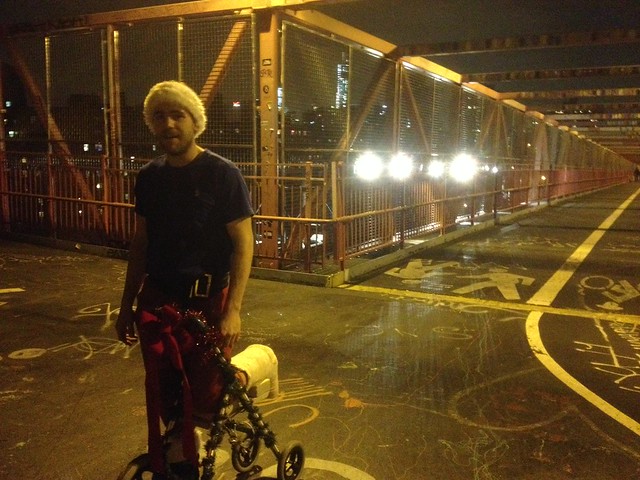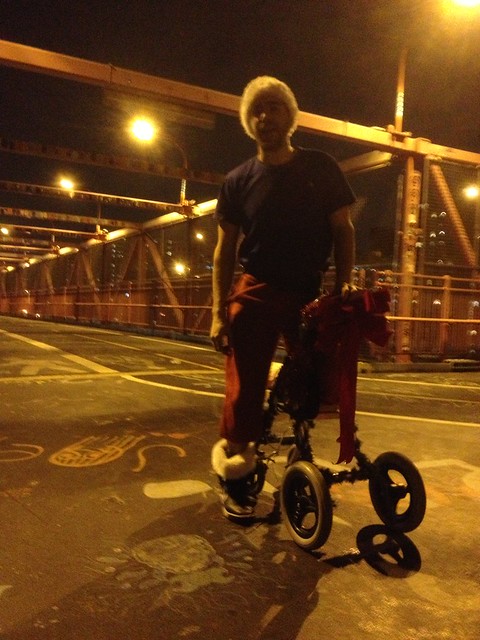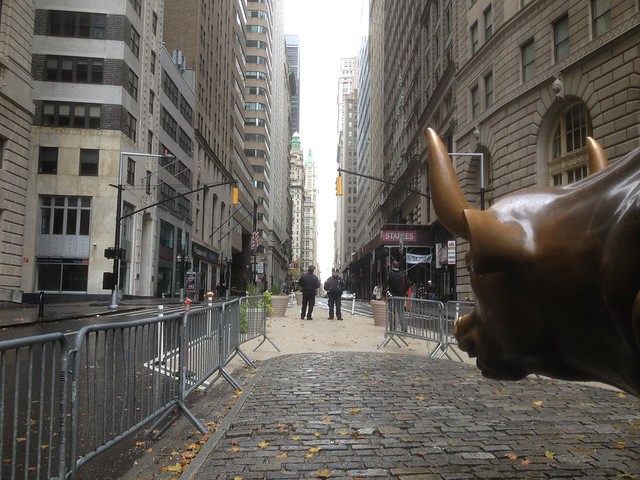DD: Where did you film and how did those spots come about?
Seigel-Boettner: We filmed one story in Zambia, one in Ghana, one in India, one in Guatemala and one in Southern California. I worked with Project Rwanda and I'd gone to the Interbike trade show a couple of times to represent them. That's where I found out about World Bicycle Relief (WBR), the project that we filmed in Zambia that's now all over sub-Saharan Africa, probably the biggest bike development project out there. I knew that there were probably other projects like them around the world, to find them I literally spent a month during my senior year Googling "bike project —pick a country—." I sent an introductory letter to project directors, the ones that responded narrowed down the spreadsheet a little bit more, and then sat down and looked at themes. We knew we wanted a story related to education, one related to healthcare, hopefully several relating to women's empowerment.
Seigel-Boettner: The two extremes of how we found our characters —and this is not a knock against any of the organizations we filmed with, it was a demonstration of different size NGOs. With WBR, we told them what we wanted and they literally sent us page long biographies of four different characters. They set us up with a driver and a translator and all the logistics were totally in line, and we were able to shoot all of Fred's story in like three and a half days… which was awesome for us and for them because it minimized the cost and confusion and everything just clicked really well. On the other end of the spectrum was the project we worked with in India, Ashta No Kai, another awesome project, but they are much smaller, they haven't worked with film crews before… So we were told we were going to have two to three girls to interview and we could pick which one we wanted to have be in the film. We went into their women's center and 40 girls from the local high school piled in behind us, and sat in rows in their little pink saris and uniforms, and it ended up being a mass interview with 40 giggling high-school age girls who didn't speak our language (laughs). It was one of the weirdest casting calls I've ever done as a director. Bharati, the girl who ended up making the film, she was sitting off to the side in the front row, she was making eye-contact with us the whole time, wasn't giggling or talking to her friends, and when we asked what do you want to be when you grow up, she was like 'I want to be district supervisor' and we were like 'ok I think we're good.' She's probably the most composed and articulate 14 year old I've ever met anywhere, period.
DD: I was struck by how intimate you were able to get with your subjects, both in shot choices and into their stories. How did you get them at ease, how did you communicate cross-culturally?
Seigel-Boettner: A lot of it, again, came down to the project. We were very clear that we wanted to have good translators whenever we could, a lot of times the translator would be someone who worked with the project before. Like our translators for Zambia, one was one of WBR’s drivers, he drives the trucks to ship all the bikes around to different distribution points and serves as a driver when they have people come to visit the project, big Zambian guy named Giff, who's hilarious. He and our other translator Preston, a local filmmaker, they both kind of acted as production assistants and were able to communicate the vision of what we wanted to Fred, and that was a really amazing opportunity because we didn't have to script out or explain what type of shots we wanted to get and he understood the story that we wanted to tell because they were able to communicate the film/storytelling medium we were trying to accomplish. We were able to skip that really awkward 'getting to know you' phase because our translators already knew the people who we were talking to pretty intimately, and that definitely allowed us to shortcut things.
DD: I think that's easier said than done, you bridged the gap from large international institution to local fixer to film-able subject. You're stressing the fixer/local tie-in as the strongest link?
Seigel-Boettner: Yeah, all the projects we were working with place a very strong emphasis on being run by locals. WBR was the biggest organization that we worked with, right now there's something like 70+ staff all over Africa, I think two or three of them are expats. The rest are all locals. The same thing with the other projects. We never worked with an American or European other than our initial contact and helping us figure out our logistics. Those were the kinds of projects that we wanted to highlight, too. Those are the ones that are the most successful, the ones that aren't run by foreigners. There're plenty of smart people in those countries that need to be given the opportunity. I think that the best way that we can help with our skill sets is by helping them with storytelling. That's something that a lot of non-profits unfortunately lack: a good way to tell their stories. When it comes to reaching out and telling people what you do, there's not a better way to do it then to have a short video piece that has a person talking about how it impacted them.
Seigel-Boettner: There’re a lot of really good stories being told out there through documentary film that are about 45 minutes too long. I've seen a lot of 90-minute social justice documentaries that I thought were spot-on, there's one about skateboarding in Afghanistan called Skateistan that's amazing. But a lot of times you can condense your story and make it consumable by a wider audience, and if you're trying to tell a story that needs to get out there and be told, I think you need to consider what's going to get the most people to see it. We knew that we really wanted kids to be able to see our film, for teachers to be able to use it in the classroom. When I was growing up, the way that movies were used was as a rainy-day thing or a substitute teacher thing, they'd put in the movie and leave the classroom, then the bell rings halfway through the movie and everybody leaves. As a filmmaker that's really frustrating, because we put all this time and effort into it, and especially with documentaries it's something that can be an incredible educational tool. When it's all said and done and we're no longer traveling with the film I want it to be something where a teacher can send me an email, get a copy of the film, get a copy of the classroom companion, put it in their school library, and hopefully continue to use it over the years as part of their curriculum.
DD: It looks like you're thinking about how to get around the issue of a film getting a lot of effort put into it and it sort of has its initial run and then disappears. In that vein, are you satisfied with how the film rolled out?
Seigel-Boettner: Yeah! I mean (laughs) we thought we were going to do about ten screenings, it was going to be kind of cute, and then we'd all go to grad school and that would be it. Instead I spent pretty much all of last year except for two months on the road with the film. I stopped counting at like 75 screenings. It was insane. I think we're still going to be doing screenings two or three years down the road. Maybe that's just because it's a story that was at the right time and people wanted to hear it, I don't know. So we're blown away. It's really awesome but at the same time it's kind of frustrating, because I go to all these film festivals and I see all these other amazing films that for whatever reason the spark never takes off.
DD: I hear that. I think deployment especially for docs is a huge conundrum. A segue from that question: you can answer this in a film industry context or academic context or international humanitarian perspective: What are you up to, right now?
Seigel-Boettner: Our big project right now is our second film, which we're getting really close to finishing our rough-cut on. It's called Singletrack High, it follows six student athletes through the 2012 season in the Nor-Cal High School Mountain Bike League, looking at kids who are life-long cyclists, kids who have never ridden a mountain bike before, and looking at the benefits of keeping kids on bikes through an institutionalized program at an age when most kids get car keys and stop riding bikes. WMOTW was great in that it encouraged people to look at other uses of the bike around the world, but at a certain point a lot of the countries that we filmed in have a potential to go the way of China, where they look at us as what "developed" means, and that means switching to a car culture/car economy, and the bike gets left behind. We wanted our next movie to be something that encouraged people to practice what WMOTW was preaching. The first race of the Nor-Cal season this year had I think 550 kids racing and over 2000 people at the venue, and their pit zone was the size of a football field, it's almost becoming an institutionalized high school sport in Northern California. So that's our next project, hoping to be released in January, we're working with Specialized and the National Interscholastic Bicycling Association, we're going to do a similar but slightly more established screening tour in the spring.
Jacob has a knack for telling stories about projects that are simple, effective, and that encourage diverse action. Expect his work in his home territory to be equally motivating. With My Own Two Wheels is available to stream for free at withmyowntwowheels.com. Keep up with Jacob and his brother Isaac’s newest project at pedalbornpictures.com.
INTERVIEW HAS BEEN CONDENSED AND EDITED.
Read More......













































































